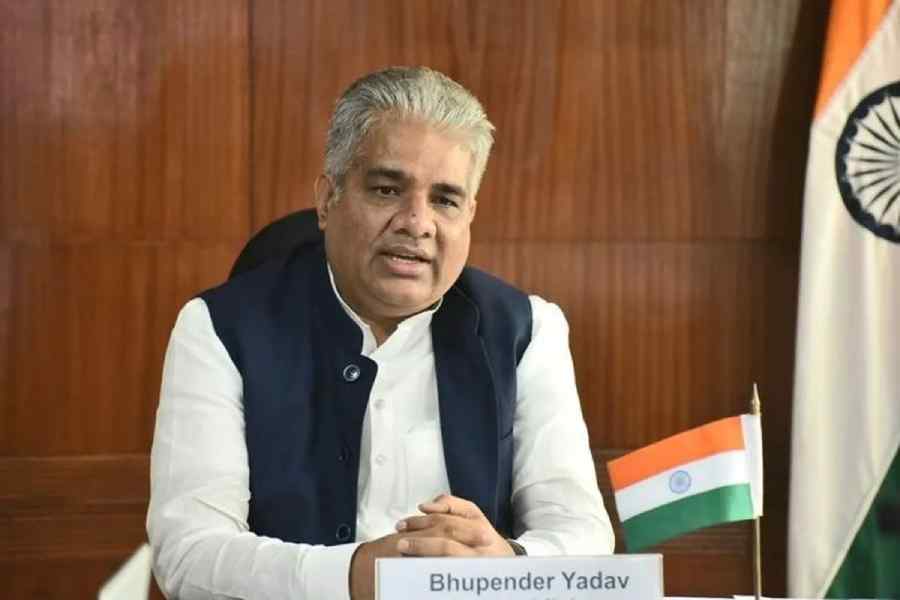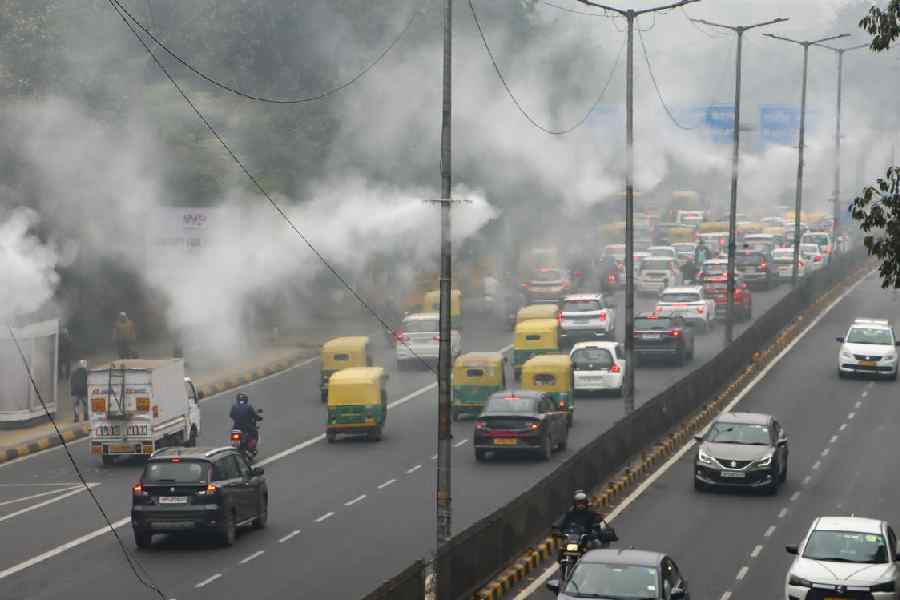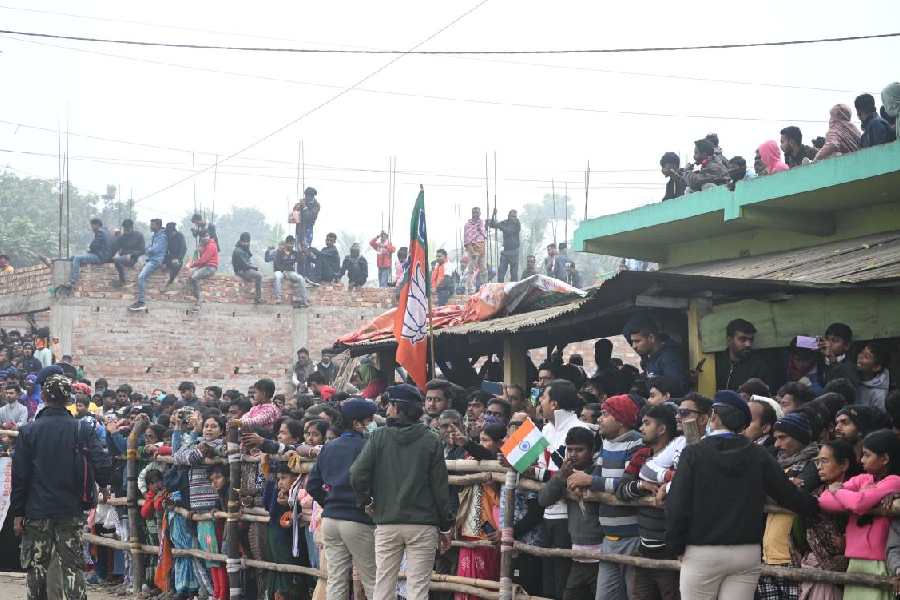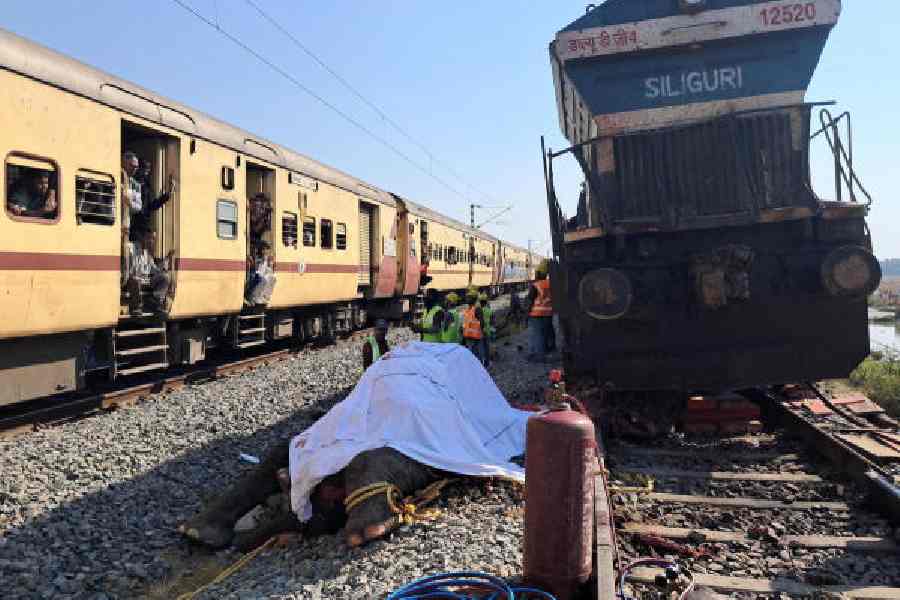 |
| Tillers transplant paddy saplings. Telegraph picture |
Patna/Bhagalpur, Aug. 25: Paddy transplantation has witnessed an impressive increase in the past month in terms of coverage of targeted area across the state.
Though the percentage coverage stood at 56 per cent at the end of July, it has now soared to 88.66 per cent.
“According to the record of the agriculture department, the transplantation of paddy saplings in the state has been done over 30,81,066 hectares as against the target area of 34,75,000 hectares on August 23. The primary factor leading to the increase in the area covered under paddy transplantation over the past one month is good rainfall in the state, especially during the past fortnight. Another reason is most farmers do not plant any alternate crop in the kharif season. They have sown and transplanted paddy even in the smallest spell of rainfall,” said A.C. Jain, deputy director (information), agriculture department.
The paddy belts in Bihar are spread across Rohtas, Buxar, Patna, Bhojpur, East Champaran, West Champaran, Bhagalpur, mostly in north and central Bihar.
Meteorologists claimed that with relatively good rainfall, July and August were “very favourable” for paddy transplantation. “The rainfall deficiency for Bihar, together for July and August (till date), has been recorded at 14 per cent. The marginal deficiency in the rainfall has not proved detrimental to the sowing,” said Ashish Sen, director (radar), India Meteorological Department (IMD), Patna.
The state has received 568.2mm of rainfall between June 1 and August 23 as against the expected 740.5mm — a deficiency of 23 per cent.
Agro-meteorologists, on the other hand, claimed that the transplantation coverage was not that good in all districts because of uneven distribution of rainfall. “Districts like Buxar, Banka and Jamui in south Bihar and Purnea and Katihar in the eastern part received very low rainfall. Accordingly, the transplantation in these places has been quite low. Districts like East Champaran, West Champaran, Darbhanga and Samastipur have, on the other hand, received good rainfall. Though the figures for overall transplantation have increased, it has not been good in all districts,” said Abdus Sattar, assistant professor of meteorology, Rajendra Agriculture University, Pusa, Samastipur.
In Bhagalpur, otherwise known as the rice bowl of the state, farmers echoed Sattar’s claims of low transplantation coverage in the region.
“We could sow seeds only in 23 per cent areas because of no rainfall in June. By this time, we generally complete 50 per cent sowing,” said Birbal Das, a farmer who produces the Katarni variety of rice in Jagdishpur block in the district.











